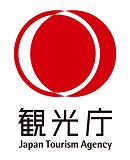Last Updated:May16, 2022
The final resting place of Kanenbo Zenshun, the priest who is believed to have introduced Jodo Shinshu (True Pure Land) Buddhism to the Shirakawa area in the thirteenth century, is distinctly modest. The grave is marked by a pile of small stones and a simple slab at the foot of a majestic cedar tree. This humble form reflects the teachings of Jodo Shinshu and was the most common type of grave in Shirakawa until recent decades.
Ancestor worship, centered on the maintenance of tombs to memorialize the dead, has been a core element of religious life in Japan since antiquity. In contrast, Shinran (1173–1263), the founder of Jodo Shinshu, preached that worshiping one’s ancestors and conducting rituals at graves containing their remains so that they may eventually pass into the afterlife is unnecessary. According to Shinran, as the Amida Buddha offers believers salvation immediately after death, there is no need for tombs or urns.
Shinran’s teachings were widely adopted in Shirakawa, where the dead were traditionally cremated outdoors and most of their remains scattered into the natural landscape. Only a few fragments of bone were buried and stones piled on top of them, as is the case with Zenshun’s grave.
この英文解説は、2021年観光庁「地域観光資源の多言語解説整備支援事業」により整備しています。
This English description is provided by the "Multilingual Commentary Project 2021" of Japan Tourism Agency.
